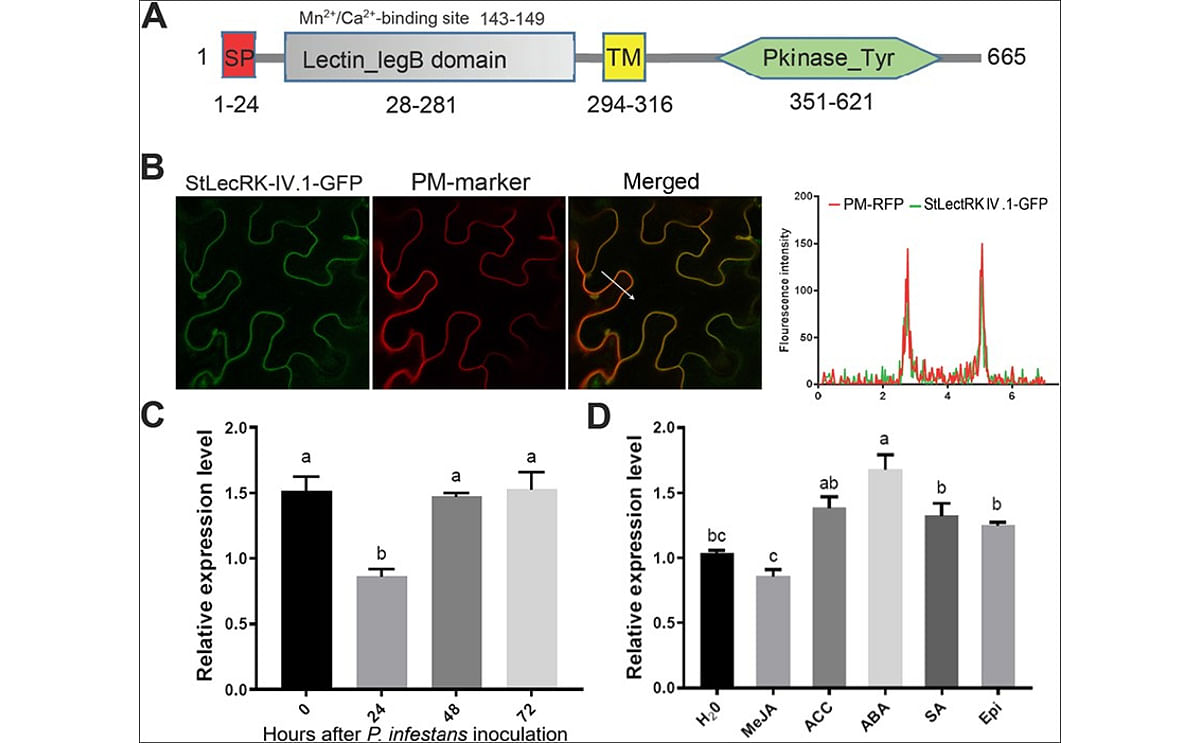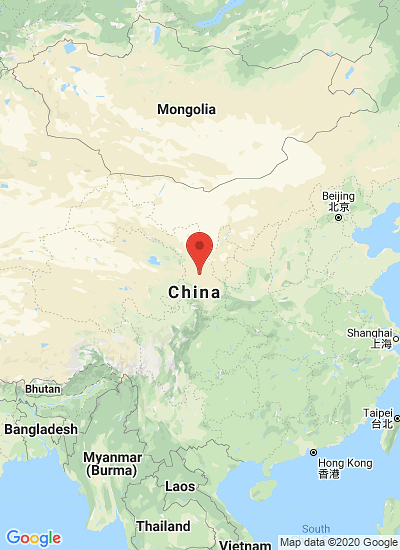StLecRK-IV.1 structure, localization, and induction pattern.
Chinese Scientists clear up further details of the complex regulation of Potato blight resistance

In recent work published in the journal Horticulture Research, researchers from Northeast Agricultural University and Huazhong Agricultural University characterized a negative regulator of late blight resistance in potato.
They showed that a potato LecRLK, StLecRK-IV.1, participates in plant immunity against P. infestans by serving as a negative regulator. The transient expression of StLecRK-IV.1 in Nicotiana benthamiana significantly enhanced leaf colonization by P. infestans.
By contrast, the size of disease lesions caused by P. infestans was reduced by virus-induced gene silencing of the StLecRK-IV.1 ortholog in N. benthamiana, as well as in potato plants with stable RNA interference of StLecRK-IV.1. The expression of StLecRK-IV.1 was downregulated by P. infestans and activated by abscisic acid.
Tetraspanins, which belong to the transmembrane 4 superfamily (TM4SF), are integral membrane components for endosome organization and are widely distributed in mammals, insects, fungi, mosses, and higher plants. There are 17 tetraspanin (TET)-like genes in the Arabidopsis genome, of which TET8 and TET9 are mammalian CD63 orthologs.
The Arabidopsis tet8 mutant shows reduced formation of extracellular vesicles (EVs), accompanied by an impaired reactive oxygen species (ROS) burst in response to stressors, suggesting a role for TET8 in the formation of EVs. Like CD63 in mammals, TET8 is also considered a specific marker for exosomes in plants, and TET8-associated EVs can be considered plant exosomes.
Botrytis cinerea induces TET8 and TET9-associated vesicle accumulation at the sites of infection, and TET8- and TET9-associated exosomes contribute to plant immunity against B. cinerea infection by transferring host small RNAs (sRNAs) into fungal cells, where they suppress pathogenicity by targeting virulence genes.
In this study, researchers used a membrane yeast two-hybrid system to demonstrate that tetraspanin-8 (StTET8) interacted with StLecRK-IV.1, and this result was further verified by co-immunoprecipitation, a luciferase complementation assay, and a bimolecular fluorescence complementation test.
StTET8 is a positive immune regulator that limits P. infestans infection. The co-expression of StLecRK-IV.1 with StTET8 antagonized the positive roles of StTET8 against P. infestans. Moreover, the co-expression of StTET8 with StLecRK-IV.1 affected the stability of StTET8, a result that was confirmed by a western blot assay and a confocal assay.
The author's evidence demonstrated that a potato StLecRK-IV.1 negatively regulates late blight resistance by interacting with and affecting the protein stability of a positive regulator, StTET8. This work provides a novel interaction mechanism of how a plant LecRLK regulates the immunity of plants.








